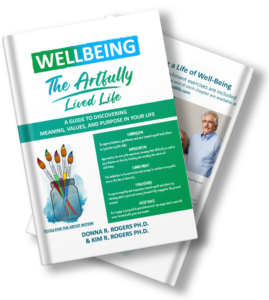Effective Communication in Relationships
Effective communication in relationships can at times be easy, flowing and exceptionally rewarding. At other times, however, it may be challenging and not so effective. This of course depends on many factors such as the focus of the communication, each person’s past experience, emotional state and expectations, as well as past relational experience (unresolved baggage). Nevertheless, there are approaches that can be useful even in the most challenging conversations. While these communication skills and strategies are not difficult to understand, they do require practice and commitment by both parties. Let’s start with some of the basics.
Relational conversations may be primarily factual or emotional, and focused outward on others or toward the participants. They can be aspirational (where should we go on our vacation), problem solving (what should we do about this or that), or more challenging (it drives me crazy when you …). When used and practiced, these five steps can make conversations more effective and rewarding to each person involved.
Step 1: Initiating the Conversation: The partner who has an issue begins by expressing their feelings related to a specific event, using the format, “I felt ______ (emotion), ______ when _____ (event) ________.” During sharing by the speaker, the listener should be fully attentive, facing the speaker without distractions, open in posture, and maintaining comfortable eye contact. This may take some effort, especially when you are tired or distracted.
Step 2: Expressing the Problem: The speaker details what is on their mind, feelings, and thoughts. It’s important to use “I feel” statements, focusing on one’s feelings and perspective, rather than blaming others. Although another may share fault for an event (including the person you are talking to), our feelings are our own. For example, saying “I’m so angry about being spoken to like that!” instead of “You made me so angry when you spoke to me like that!” which can sound accusatory and often results in a defensive response.
Step 3: Reflecting and Summarizing: The listener’s role is to reflect and summarize the issues and speaker’s feelings, from the speaker’s point of view, using similar but not parroting language. Reflecting means to reflect back what you heard and understood about what the speaker said. The listener should then ask for confirmation, like “Did I understand you correctly?” and “Did I leave anything out?” The listener should remain non-defensive and empathetic, continually reflecting and summarizing until the speaker feels fully heard and understood. This is critical but not always easy, especially when you may be the object of hurt or angry feelings.
Step 4: Validating and Acknowledging: After the speaker has finished expressing their thoughts and feelings, the listener acknowledges and validates the speaker’s right to feel and think as they do. The listener should remember that the speaker’s message is about the speaker’s experiences and feelings, not necessarily about the listener, even if it involves something the listener did. It is important to remember that this does not necessarily mean that you would feel the same way, however feelings are just feelings and each person has a right to feel what they feel and also to take responsibility for their own feelings.
Step 5: Proposing Solutions: The speaker, having fully expressed their issue, is responsible for suggesting a change or solution. If the speaker is unable to propose a solution that works for both, we will get to the OLIVE problem solving process below.
Throughout these steps, the listener’s role is to understand and empathize without trying to correct or challenge the speaker. The goal is connection, not correction. The listener should let go of the need to be right and focus on understanding the speaker’s perspective. I am not suggesting that this is always easy, however, it is effective.
The Listeners’ Role in Communication
Even if the listener’s actions may have initiated the conversation, it’s essential to understand that they are hearing the speaker’s emotional reaction to these actions. The speaker is sharing their personal internal experience – thoughts and feelings – with the expectation that the listener will provide respectful and supportive attention. It’s not necessary for the listener to agree with the speaker; what matters is listening to each other with trust, respect, and support. This practice is a fundamental part of any caring and respectful relationship, regardless of whether the message is positive or negative.
At this stage, the listener should express gratitude to the speaker for their trust in sharing their experiences. Then, the listener can ask if they may respond. However, this response should not be a counterargument or rebuttal.
The focus is on understanding and connecting, not winning an argument. This isn’t an opportunity for a counterargument. Remember, the goal is not to “win” but to understand and connect.
Exchanging Communication Roles
The listener becomes the new speaker, and the original speaker assumes the role of active listener. It’s important to remember that an effective and rewarding conversation will be centered on resolving the problem, not on personal differences, and will be aimed at mutual support rather than winning a debate.
The second speaker then shares their perspective on the proposed changes, explaining why they may or may not be feasible. Speaker 2 then addresses whether the proposed solution is feasible, explaining their viewpoint. Since the problem originally belonged to the first speaker, Speaker 2 does not need to revisit the problem but can express their feelings and thoughts about the situation, following the same communication steps outlined earlier.
The Three P’s of Relational Communication
You may find that these steps could be useful, but it is difficult to remember all this information in the middle of a challenging conversation. In relational communication, especially with couples who experience high emotions and conflicts, a straightforward strategy that is discussed in “Well-Being: The Artfully Lived Life” is termed, “The Three Ps Method”. This is easy to remember especially if you stick it on the fridge or bathroom mirror and can be particularly effective. This approach emphasizes staying as factual as possible and minimizing emotional content during discussions, which is crucial given that the conflict level in such relationships is often already high, with many potential triggers.
Using this method begins with following the initial steps of assertive communication. A person might request a conversation and schedule a specific date and time. It’s also beneficial to set an agenda for the discussion, but it’s important to focus on only one topic at a time.
On the agreed date and time, with all involved parties present, the speaker uses the following format. This structured approach helps manage the conversation effectively, ensuring that it remains focused and constructive, particularly in emotionally charged situations. By adhering to this format, couples and families can address their issues more calmly and productively.
- First P (Problem): Begin by stating the issue as you see it. Focus on describing the problem and why it’s a concern for you, but keep this description factual, without incorporating opinions or emotions.
- Second P (Preference): Next, express what you would ideally like to happen. Outline your preferred outcome or the changes you wish to see. Keep this part concise and straightforward, avoiding complex explanations.
- Third P (Proposal): Finally, propose a solution. Your suggestion should aim to resolve the issue in a way that works for everyone involved, not just for you. The objective is to simplify the problem and reach a consensus efficiently and effectively.
First P (Problem) – This is the problem as I see it . . .
Second P (Preference) – What I would prefer is . .
Third P (Proposal) – What I propose is . . .
This structured approach allows for a focused discussion on the issue at hand, helping all parties understand the problem, the desired outcome, and the proposed solution without getting bogged down by emotional or complex explanations. This strategy can also be found in “Well-Being: The Artfully Lived Life” (theartfullylivedlife.com).
Enhancing Communication with Empathy and Assertiveness
Empathy is a cornerstone of active listening, enabling you to connect emotionally and cognitively with the speaker. It’s a key skill in healing and repairing emotional, cognitive, or spiritual damage. When learning these communication steps, it’s crucial for both the speaker and the listener to adhere closely to the guidelines. Pay attention to non-verbal cues like body language, facial expressions, and tone of voice. If these come across as condescending, judgmental, or sarcastic, this can trigger negative emotional responses, obstructing empathic and open communication.
It’s important to remember that communication can be affected by intense emotions linked to past experiences. Feelings of vulnerability, insecurity, or fear may disrupt the ability to communicate effectively.
Recognizing that certain triggers or reactions stem from past experiences rather than the present can greatly enhance trust and intimacy in a relationship. Handling these together through empathic listening is beneficial. It’s also helpful if partners can manage their negative responses while giving each other the benefit of the doubt. Engaging in the communication process with grace and equanimity can be a powerful healing process, beneficial both individually and for the relationship.
Assertive Communication
So, you may be thinking this sounds OK for issues such as I don’t like the way you load the dishwasher or sweep the floor but what about the bigger can of worms that has been an unresolved elephant in the room for months or years? Perhaps a more structured process such as Assertive Communication would be useful. This process involves stating your wants, needs, and feelings. The goal isn’t to hurt, win, or blame but to negotiate for change. The steps for assertive communication, especially useful in situations with high emotional intensity and low compromise willingness, are outlined in this section. While less formal methods may suffice for simpler situations, adhering to these steps shows deep respect and concern for the other party and can improve the relationship.
Guidelines
- Schedule a time and place that will accommodate both parties.
- Briefly inform the other individual of the general topic so they can feel ready to talk.
- Start by describing the problem, your thoughts and feelings, and your hopes and dreams surrounding the issue.
- Describe what the ideal situation would look like.
- Make a suggestion that might help improve the situation while remaining sensitive to the other person’s needs.
- Describe how the changes will be helpful.
- Describe the likely outcome if changes are not made.
- Listen respectfully and openly to the thoughts and feelings of the other person.
- Discuss solutions that integrate both positions.
- Describe where you can compromise and where you cannot.
- Decide on an outcome that will benefit both parties.
Where can I find additional information?
“WellBeing: The Artfully Lived Life,” is a complete guide to psychological well-being; a holistic concept, encompassing all aspects of our lives. This book offers a wealth of insights and practical advice for practicing mindfulness, fostering meaningful relationships and engaging in thinking and behavior that brings joy and fulfilment in your life. Taking small steps each day can lead to transformative changes in your well-being, ultimately leading to a more balanced and artful existence.


